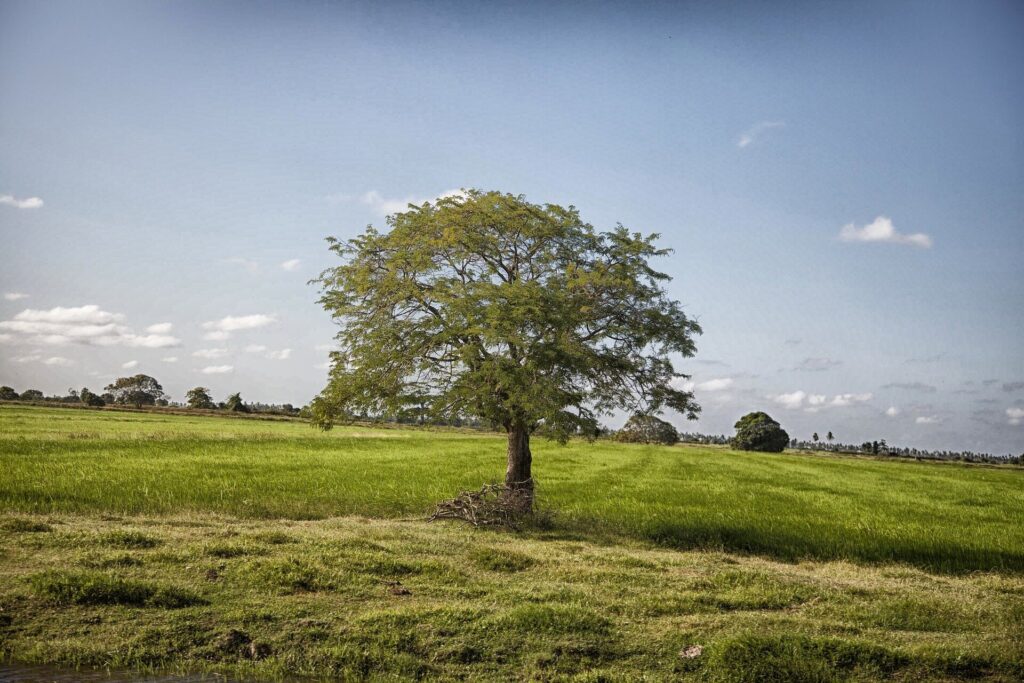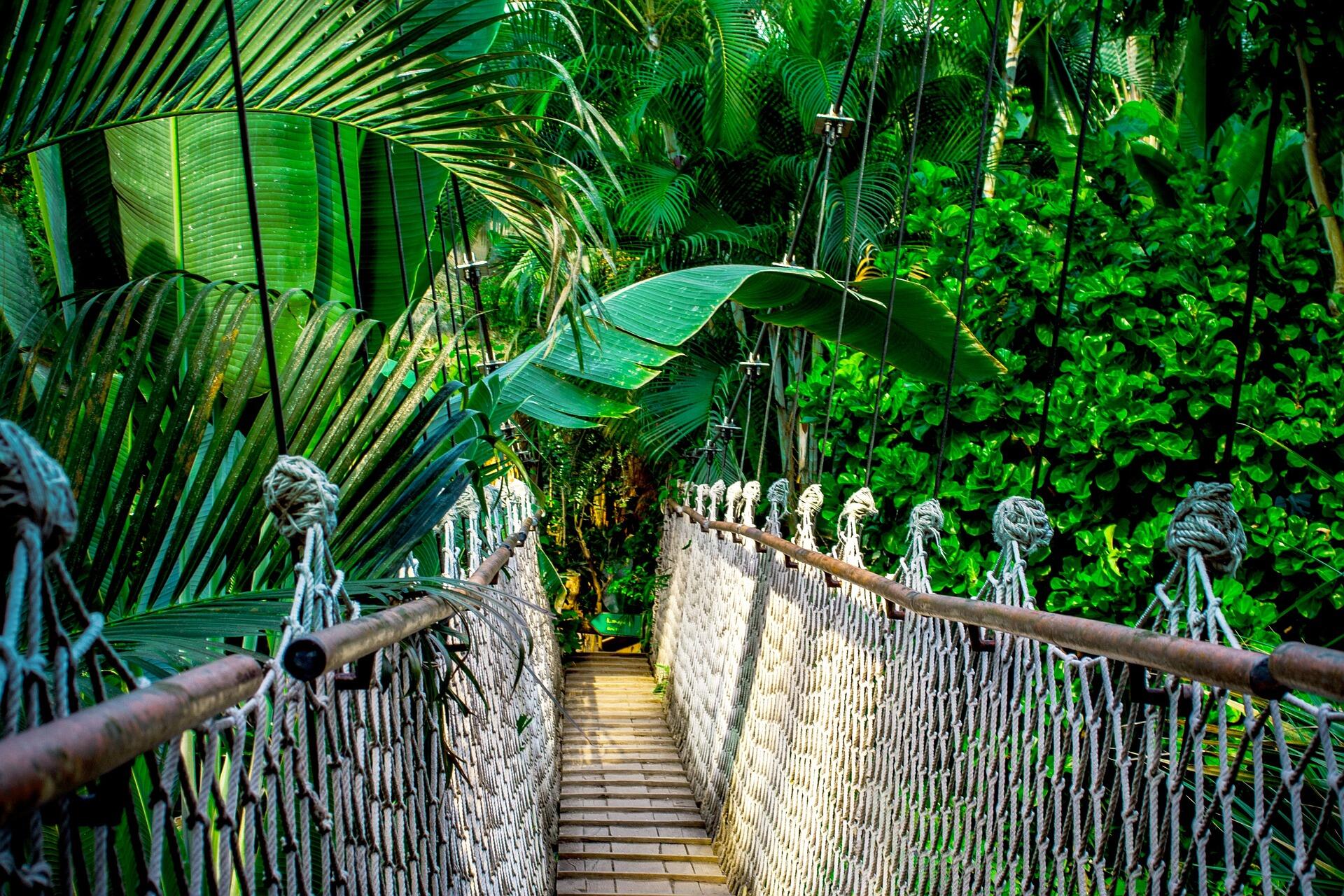Welcome to Journeeo
People call Guyana “the gem of South America” because of its beautiful nature, lively culture, and wide range of animals. Guyana’s beautiful jungles and tumbling waterfalls are just a few of the many unique attractions that guarantee remarkable experiences. If you’re considering a vacation, here are twelve must-see sites and activities that highlight the best of Guyana’s offerings
1. Kaieteur Falls: A Majestic Waterfall

The World’s Largest Single Drop Waterfall
Kaieteur Falls, located in the heart of the Amazon rainforest, is one of Guyana’s most iconic natural wonders. With a single drop of 741 feet, it is one of the tallest and most powerful waterfalls in the world. The sheer force and volume of water create a spectacular display that is both awe-inspiring and mesmerizing.
Adventure and Accessibility
Reaching Kaieteur Falls requires a thrilling journey by small aircraft, offering breathtaking aerial views of the lush rainforest below. Once at the falls, a series of viewing platforms provide different perspectives of this majestic natural wonder.
Wildlife and Surroundings
The area around Kaieteur Falls is rich in biodiversity. You might spot golden frogs, unique bird species like the Guiana Cock-of-the-rock, and various plant species endemic to the region.
2. The Rupununi Savannah: A Vast Grassland

Expansive Landscapes
The Rupununi Savannah is a vast, picturesque grassland in southern Guyana. Stretching over 13,000 square miles, it offers a stark contrast to the dense rainforest and is home to a range of unique wildlife.
Wildlife Viewing
The savannah is an excellent location for spotting wildlife, including giant river otters, capybaras, and jaguars. Birdwatchers will delight in the diverse avian species, such as the Harpy eagle and the Red-shouldered Macaw.
Cultural Encounters
The Rupununi region is also home to indigenous communities like the Makushi and Wapishana. Visitors can engage with local cultures, learn about traditional practices, and enjoy authentic cultural experiences.
3. Georgetown: The Capital City

Historical and Cultural Hub
Georgetown, the capital city of Guyana, is a vibrant cultural and historical hub. Its colonial architecture, colorful wooden houses, and bustling markets reflect its rich history and diverse culture.
Key Attractions
- St. George’s Cathedral: One of the tallest wooden churches in the world, renowned for its stunning architecture.
- The National Museum: Offers exhibits on Guyanese history, culture, and natural history.
- The Promenade Gardens: A serene park ideal for leisurely strolls and relaxation.
Local Markets
The city’s markets, such as the Bourda Market, provide a sensory feast of fresh produce, spices, and local crafts. They offer a chance to experience the vibrant street life and sample traditional Guyanese cuisine.
4. The Iwokrama Rainforest: A Biodiversity Hotspot

Ecological Richness
The Iwokrama Rainforest is a protected area that spans over one million acres of pristine rainforest. It is renowned for its exceptional biodiversity, with thousands of plant and animal species.
Ecotourism and Research
Visitors can engage in ecotourism activities like canopy walks, river cruises, and wildlife tracking. The Iwokrama Forest Reserve is also a center for scientific research, contributing to the conservation of tropical rainforest ecosystems.
Unique Experiences
The Canopy Walkway offers an exhilarating experience with breathtaking views of the forest canopy. River cruises along the Essequibo River provide opportunities to spot wildlife such as giant river otters and caimans.
5. Shell Beach: A Coastal Paradise

Turtle Nesting Site
Shell Beach, located on the northern coast of Guyana, is a unique and picturesque destination known for its pristine sands and rich marine life. It is one of the world’s most important nesting sites for leatherback, green, and olive ridley turtles.
Eco-Tourism and Conservation
The beach is protected by the government and various conservation organizations. Visitors can witness the nesting and hatching of turtles, guided by local conservationists who ensure minimal disturbance to these endangered species.
Natural Beauty
The beach’s remote location and natural beauty make it an ideal spot for relaxation and nature photography. The surrounding mangroves and wetlands add to the area’s ecological diversity.
6. The Essequibo River: A Majestic Waterway

Scenic River Cruises
The Essequibo River is the longest river in Guyana and offers scenic river cruises through its winding waterways. The river’s diverse landscapes include dense forests, tranquil lagoons, and picturesque islands.
Wildlife and Exploration
Cruises along the Essequibo River provide opportunities to spot wildlife such as river dolphins, monkeys, and various bird species. Exploration of the river’s tributaries and islands reveals hidden gems like waterfalls and natural pools.
Cultural Encounters
Several indigenous communities live along the Essequibo River, offering visitors a chance to learn about their traditional lifestyles and crafts. Cultural exchanges and guided tours provide a deeper understanding of local heritage.
7. Orinduik Falls: A Hidden Gem

Scenic Waterfall
Orinduik Falls, located in the southern part of Guyana near the Brazilian border, is a stunning waterfall on the Ireng River. Its unique characteristic is the wide, shallow cascade that creates natural pools perfect for swimming.
Remote and Tranquil
Accessible by a combination of flight and river transport, Orinduik Falls offers a more secluded and tranquil experience compared to the more famous Kaieteur Falls. The surrounding landscape is equally captivating, with expansive views and lush vegetation.
Adventure and Relaxation
Visitors can enjoy a refreshing dip in the natural pools, relax on the smooth, flat rocks, and take in the breathtaking views of the falls and the surrounding rainforest.
8. The Kanuku Mountains: A Rugged Terrain

Mountain Range and Biodiversity
The Kanuku Mountains, located in southwestern Guyana, are a rugged and remote mountain range known for their rich biodiversity. The mountains are covered in dense forest and offer a variety of hiking and exploration opportunities.
Wildlife and Scenery
The Kanuku Mountains are home to numerous wildlife species, including jaguars, tapirs, and a variety of bird species. Hiking trails offer stunning views of the surrounding landscape and the chance to encounter unique flora and fauna.
Cultural Significance
The mountains are also significant to local indigenous communities, who have lived in the region for centuries. Visitors can learn about their traditions and practices through guided tours and cultural experiences.
9. The Lethem Region: Gateway to the Rupununi

Border Town and Cultural Hub
Lethem, a border town in the Rupununi region, serves as a gateway to the expansive savannahs and wildlife-rich areas of southern Guyana. The town’s cultural diversity and vibrant market scene make it a unique destination in its own right.
Savannah Adventures
From Lethem, visitors can explore the surrounding Rupununi Savannah, engage in wildlife safaris, and visit indigenous communities. The town also offers a range of accommodations and services for travelers exploring the southern regions of Guyana.
Local Attractions
Lethem’s market is a bustling hub where visitors can experience local cuisine, crafts, and traditional goods. The town also hosts cultural events and festivals that highlight the region’s diverse heritage.
10. The Georgetown Botanical Gardens: A Green Oasis

Urban Green Space
The Georgetown Botanical Gardens, located in the heart of the capital city, is a lush green space that offers a peaceful retreat from the urban environment. The gardens feature a variety of tropical plants, trees, and flowering species.
Educational and Recreational
The botanical gardens serve as an educational resource, with displays on tropical horticulture and conservation. Visitors can enjoy leisurely walks, picnics, and birdwatching in this serene urban oasis.
Historical Significance
The gardens have historical significance as one of the oldest green spaces in Guyana, dating back to the colonial era. The area’s historical features and well-maintained landscapes add to its charm.
11. The Surama Village: Eco-Tourism and Indigenous Culture

Community-Based Tourism
Surama Village, located in the Rupununi region, is an indigenous community that has embraced eco-tourism as a means of preserving their culture and environment. The village offers a range of eco-friendly accommodations and guided tours.
Cultural Experiences
Visitors to Surama can participate in traditional activities such as crafting, cooking, and storytelling. The village also provides opportunities to explore the surrounding rainforest and savannah, guided by local residents.
Sustainable Practices
Surama Village’s eco-tourism initiatives focus on sustainability and conservation. The community’s commitment to protecting their natural resources and cultural heritage makes it a model for responsible tourism.
12. The Roraima Plateau: A Unique Geological Formation

Tabletop Mountain
The Roraima Plateau, also known as Mount Roraima, is a striking tabletop mountain located in the Guyana Shield. Its flat summit and sheer cliffs create a dramatic and otherworldly landscape.
Trekking Adventure
Trekking to the summit of Roraima is a challenging but rewarding adventure. The trek offers stunning views of the surrounding landscape, unique geological formations, and the chance to explore an ancient, untouched environment.
Cultural and Scientific Interest
The plateau has inspired numerous legends and scientific studies. Its unique flora and fauna, combined with its geological significance, make it a fascinating destination for both adventurers and researchers.
Conclusion
Guyana, with its rich tapestry of natural wonders, diverse wildlife, and vibrant culture, offers a plethora of unique experiences for travelers. From the breathtaking Kaieteur Falls and the expansive Rupununi Savannah to the bustling capital city of Georgetown and the serene Shell Beach, each destination provides a glimpse into the country’s unparalleled beauty and cultural richness. Whether you are an adventure seeker, nature enthusiast, or cultural explorer, Guyana promises a journey filled with unforgettable memories and discoveries.
The best time to visit Guyana is during the dry season, from September to April. This period offers pleasant weather, making it ideal for exploring outdoor attractions and participating in various activities.
Guyana is generally safe for tourists, but it is important to exercise caution and stay informed about local conditions. Follow travel advisories, avoid risky areas, and secure your belongings. Engaging with local guides and respecting cultural norms will enhance your safety.
Pack lightweight, breathable clothing suitable for warm and humid conditions. Include essentials such as insect repellent, sunscreen, comfortable footwear, and a reusable water bottle. For remote areas, consider packing additional items like a flashlight, first-aid kit, and personal medications.
Travel within Guyana can be done via domestic flights, riverboats, and 4×4 vehicles. For longer distances, small aircraft and river transport are common. Within cities, taxis and minibuses are available for local travel.
Unique cultural experiences in Guyana include visiting indigenous communities, participating in traditional festivals, exploring local markets, and enjoying Guyanese cuisine. Engaging with local artisans and learning about their crafts offers deeper insights into the country’s cultural heritage
